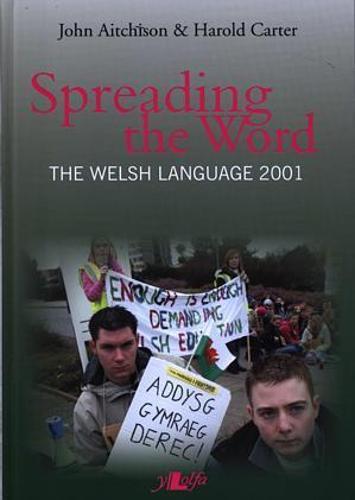Overview
A comprehensive study of the Welsh language throughout Wales as communities encounter language change at the end of the 20th century, with a detailed analysis of the evidence of the 2001 census relating to language -- Cyngor Llyfrau Cymru
Full Product Details
Author: John Aitchison ,
Harold Carter
Publisher: Y Lolfa
Imprint: Y Lolfa
Dimensions:
Width: 21.00cm
, Height: 1.30cm
, Length: 14.50cm
Weight: 0.318kg
ISBN: 9780862437145
ISBN 10: 0862437148
Pages: 160
Publication Date: 24 February 2004
Audience:
General/trade
,
General
Format: Paperback
Publisher's Status: Active
Availability: Available To Order

We have confirmation that this item is in stock with the supplier. It will be ordered in for you and dispatched immediately.
Reviews
The two authors of this book are former professors of the University of Wales, Aberystwyth, and have collaborated on a number of books on the language. The preface to Spreading the Word draws the attention of the Welsh-speaking community to the condition of the language at the beginning of the new millennium. The authors describe the survival of the Welsh language as a remarkable cultural achievement. In the introductory chapter they enlarge on the changes which have influenced the situation of the language, some of which they describe as dramatic. Serious losses in the number of Welsh speakers were recorded in the years 1961-71, but in the decade 1981-91 the percentage of losses were not so great. Wales had lost its heavy industries, coal, iron and steel, and employment in agriculture was falling. But '. . . a new bourgeoisie which was partly Welsh speaking was being created'. More and more people were employed in health and social services, a new system of government, radio and television - all these began to draw workers from rural areas. These new employers were more conscious of the existence of the Welsh language and the general attitude began to change. The second chapter, on the 2001 Census, divides the population of Wales into six categories, according to their ability to understand, speak, read, write the language or to be ignorant of it. Then follows an analysis of the categories with charts and maps and a good number of interesting asides. The last chapter, a Summary Review, offers a number of general observations. There still exists a heartland of predominantly Welsh speakers, although some areas have given rise to disappointment, particularly where the language is not transmitted within families. The marcherlands have demonstrated strong growth, but the movement of Welsh speakers from the heartlands has contributed to the increase. 'The vitality of a language rests upon three bases,' namely status, legal and economic, and ethnic identity. 'The three issues which arouse the greatest controversy' are the Welsh-speaking communities, the revision of the Welsh Language Act 1993 and the association of ethnic identity with language. The Appendix gives the number and percentage of Welsh speakers by Census Ward (electoral divisions) 2001. The book is clearly produced and is an essential tool for anyone wishing to speak or to write on the situation of the Welsh language today. -- Mari Ellis @ www.gwales.com




